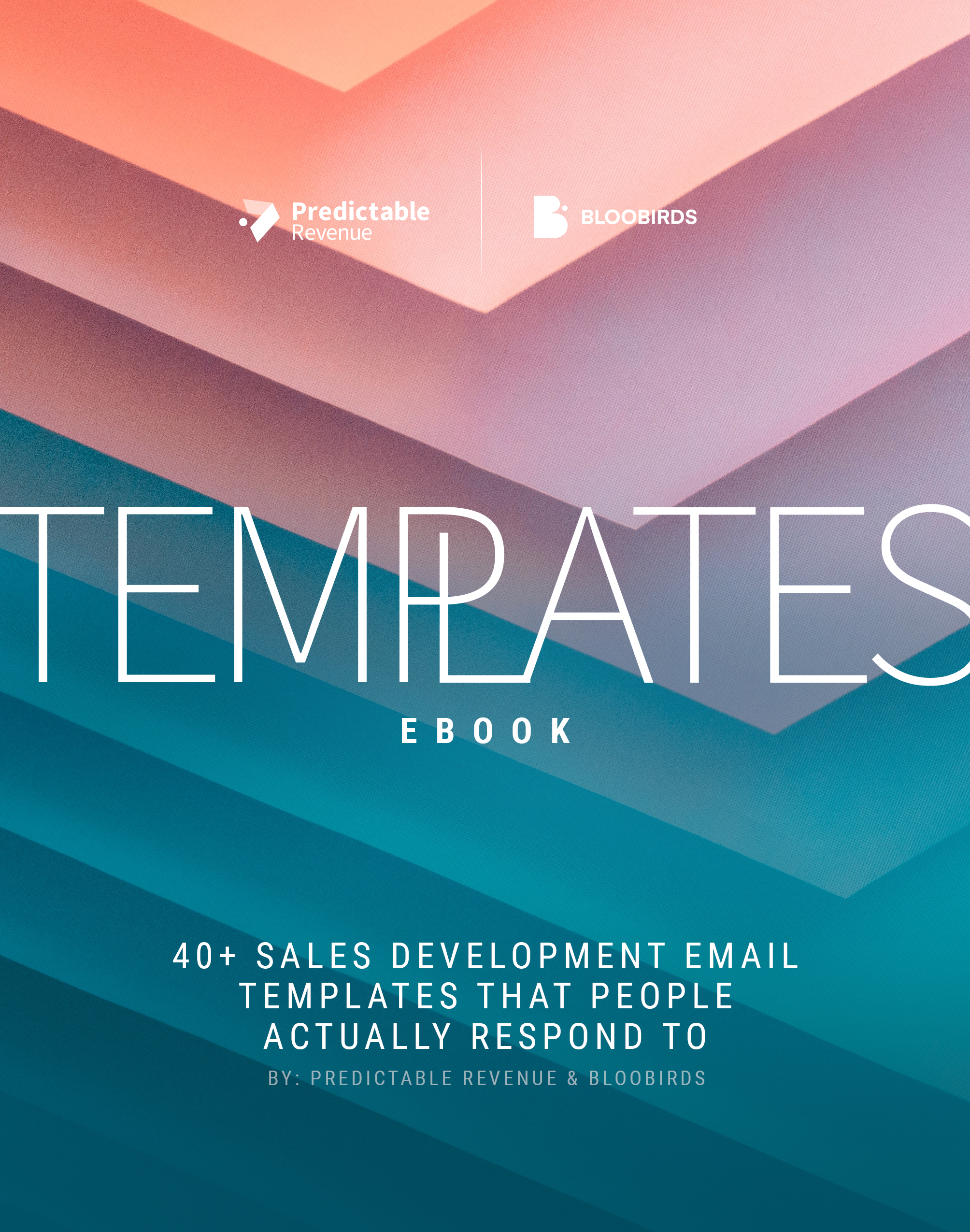Learn about sales coaching, including how it compares to sales training, why it’s effective, what being a sales coach is like, how to build a sales playbook, and more.
Traditional coaching methodologies don’t empower salespeople to be self-motivated or self-directed at gaining industry expertise. As a sales leader, you shouldn’t just react to your SDRs performance and say, “This is how you could have done this”.
In turn, you shouldn’t limit yourself to rewarding the wins without acknowledging the rights steps that were taken to get there. You want to create self-awareness in your reps’ performance and behavior to maximize their potential, and that starts with coaching.
Sales Training vs. Sales Coaching
Although both sales training and sales coaching aim to improve a sales team’s performance, each process follows a unique approach.
Sales training equips reps with the tools they need to get started, but sales coaching is what allows for an individual’s continued growth over time. To ensure success, it’s important to understand how these two pieces work together, and when each should be used in your organization.
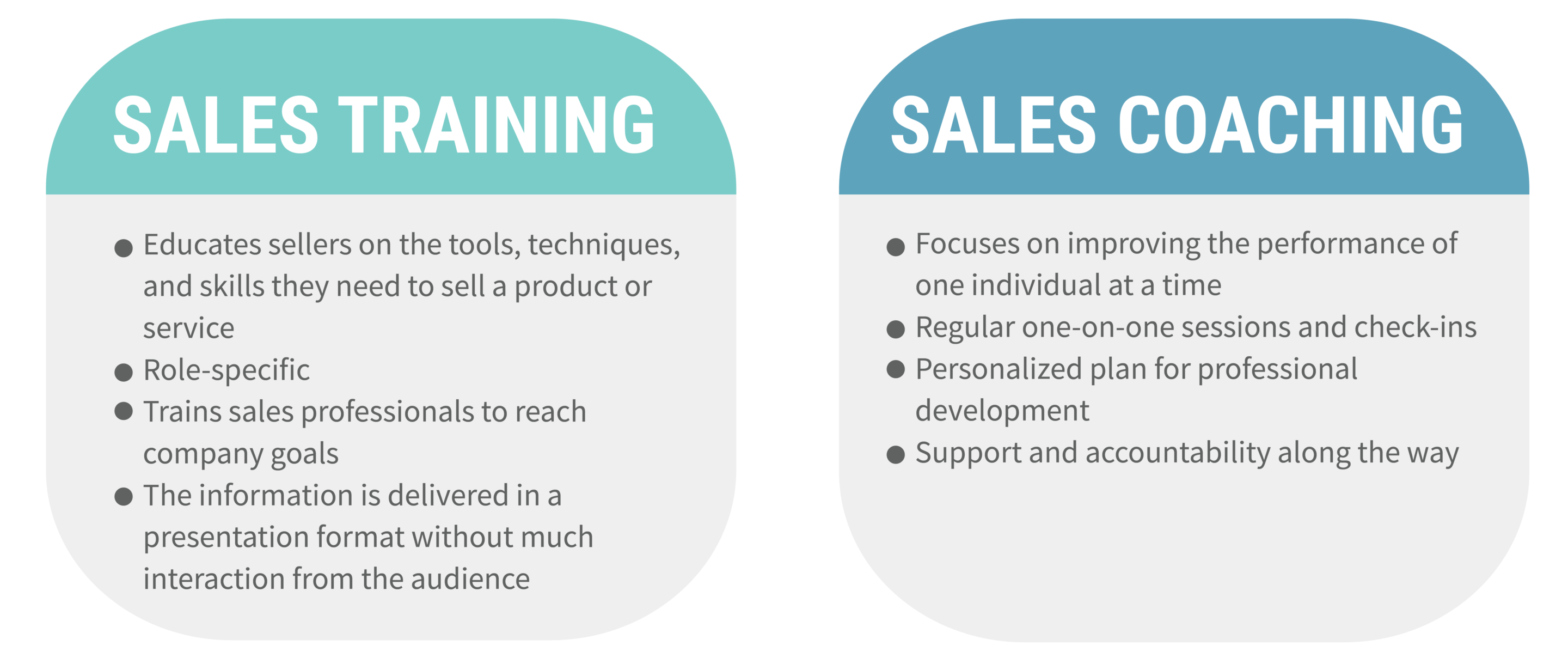
Why is sales coaching so effective?
The individual focus in one-on-one coaching allows salespeople to connect their personal development goals with the company’s success. Each salesperson has a clear goal they’re working towards, which leads to higher levels of motivation and satisfaction.
Working with a sales leader also demonstrates a clear path for advancement through the organization. This provides an incentive for reps to stay at the organization longer and reduces the expensive issue of turnover.
Sales coaches need to be empathetic, encouraging and have strong leadership skills. Although coaches often begin their careers as sales reps, not all great sellers make great coaches. Sales coaches need to create a supportive environment and understand how to motivate their team.
Great sales coaching isn’t about giving orders or forcing reps to follow every rule in the playbook. Instead, it’s about helping each member of the sales team find what works best for them, and then leveraging that to find success.
Why you need both sales training and sales coaching
Regular training is important to keep your sales team on top of the latest tactics, tools, and methodologies. If your organization introduces a new product or service, you’ll likely need new training to go with it. Training is a great way to deliver new information to a large number of people at one time.
Sales coaching, on the other hand, should be an ongoing process. Whether an individual has just started at your organization or has been there for years, sales coaching will help them maximize their potential.
Together, training and coaching will strengthen your sales team and lead to less turnover, better close rates, and increased revenue.
Are you worried about pipeline and hitting revenue targets?
We can work with your leadership team to help implement processes from the top down, as well as your team of sales development representatives to provide them with tactical sales coaching and training designed to help them achieve their quota month after month. Book a free discovery call!
A Day In The Life Of A Sales Coach
Sales coaches work with sales development reps (SDRs) to develop their skills, build confidence, and establish best practices for outbound prospecting. Coaches also work closely with sales leaders, helping with hiring support, SDR training, playbook creation, and more. The result is a more productive and successful outbound sales team.
So, what does a typical workday look like for a sales coach? We sat down with our Head of Sales Coaching, Sarah Hicks, to ask her all about it.
Morning meetings
Sarah’s day starts early, with clients located across the world in different time zones. First, she hosts one-on-one management meetings with sales leaders to talk about how things are going with the engagement.
Next, there will be meetings with the client’s entire team, including leaders, SDRs, and account executives (AEs). These calls are used to work on the tactical side of things, like building the client’s playbook, working on ideal customer profiles, buyer personas, sequence writing, and call scripts.
There may also be one-on-one coaching sessions with each SDR, where Sarah will practice active listening, role play, and conducting call reviews–all skills she learned from her time as a sales manager.
Check-ins with the Predictable Revenue Coaching Team
In the afternoon, Sarah meets with the other sales coaches to discuss the best way to help their clients’ companies achieve outbound growth as quickly and sustainably as possible. Getting together regularly with the other coaches helps ensure everyone stays on top of best practices, shares what they’re learning and that each client benefits from diverse perspectives.
Prep for the day ahead
The final part of Sarah’s workday is “offline” time, which she uses to prepare for work the next day. On any given day, she might use this time to work on a client’s playbook, look for helpful resources, or identify the best tools for their company.
The Best Part of Being a Sales Coach
Sarah’s favorite part of being a sales coach is being able to help sales leaders avoid the common mistakes that so many companies make.
Especially when a company is building their sales development function for the first time, we help them build stable and strong foundations so they can grow month after month. Companies that try to do it on their own miss those foundational pieces, and end up spinning their tires with tough problems down the line.
The most critical time to bring on a sales coach is when your company is still building the sales playbook or establishing those foundations. Problems in those foundations can impact the entire sales funnel down the line.
When we build those foundational pieces with a company, we get to see everything snowball in a good way. Everything picks up traction so much quicker.
Impact in action
One recent case study illustrates the power of those foundations. Cost Certified was building its outbound function for the first time, and the Predictable Revenue coaching team worked to build their playbook and call scripts.
This preparation allowed Cost Certified to hit the ground running, booking meetings, hitting quotas, and hiring 10+ SDRs within the first few months. You can read the full case study here.
“It’s so rewarding to be a part of that,” says Sarah. “When leaders come back and say they learned so much, and it’s really working.” Not only does the coaching result in a stronger outbound sales function, but those key pieces are able to be pulled over into other functions of the business, like marketing and customer success.
The Traits of a Successful Sales Coach
Curiosity
Like SDRs, it’s important for a sales coach to be curious. They should be strong listeners and keen information gatherers. Sarah recommends sales coaches act like a doctor, and ask lots of questions before diagnosing the problem.
It’s important to take in a company’s goals, history, budget, average deal size, and current outbound process. All of those details will impact the playbook and the recommendations of a sales coach.
“You need to stay curious,” Sarah says, “because markets change, job functions change, and budgets change.” A good sales coach is always ahead of trends in the industry.
Confidence
You also need to be confident in your recommendations. “People come to you because they want guidance from someone who’s been there before,” Sarah says. Offering vague or uncertain advice doesn’t do anyone any favors.
Of course, it’s an iterative process–no one can pick the right messaging or perfect subject line on the first try. But you can make an educated decision based on research and the data. Once you’ve made a choice, stick with it.
The Benefits of Working with a Sales Coach
External coaching benefits even the most experienced salesperson. For example, someone who has been at the same company for many years is well reversed in that particular company’s process; but in that same period of time, a sales coach has worked with dozens of different companies, and been able to see what works and what doesn’t across a wide range of markets.
A sales coach can take the most up-to-date and effective best practices, and distill them into a process that works for your company. Click here to book a free discovery call and learn how our coaches can help you build or scale your outbound sales function!
“The goal of bringing on a sales coach is for you to spend more time doing what you’re good at,” Sarah says. “You might have great negotiation skills, so we help you finetune the systems and processes, so you can spend more time playing to those strengths.”
Oftentimes experienced salespeople are great at prospecting and closing deals, but they lack systemization in the form of a playbook. Having those systems in place allows you to sit back and relax. Knowing the admin work is taken care of, you can handle more leads in the pipeline and manage more deals at once, leading to more scalable revenue.
Advice For Aspiring Salespeople
As a sales coach, Sarah works with a variety of salespeople, including new SDRs, seasoned sales reps, AEs, and revenue leaders. All of them are looking to build more pipeline and close more deals. Sarah’s advice is the same for anyone working in sales: “You need to know your customers more than you need to know your product or service.”
Regardless of where you go in your career, it’s more important to be an expert on your customers than the product. Do your research and know what your customers care about, what their day-to-day looks like, what their goals are, and any potential roadblocks to those goals.
Those are things you can impact, and that’s what people care about.
Building Your Own Sales Playbook
There are common challenges that you’re likely to encounter as a CEO, Founder, or Sales Leader, which can be hindering the development of your sales playbook.
Some of these challenges are:
1. Salespeople not following set processes
This usually comes down to an adaptation period. Sales reps prefer doing things their own way and they might be reluctant to try out new processes if they’re not well documented and backed by data. It could also be an issue of not distributing knowledge effectively throughout your team.
Make sure you’re documenting your processes accurately and clearly, as well as making it easily accesible for everyone in the team. Ensure that you put in place ongoing coaching and training for everyone on a regular basis. This is the best way to keep your team involved and informed every step of the way.
2. Struggling to find time for sales and prospecting vs. other priorities
One of the biggest obstacles in founder-led sales is not dedicating enough time to sales and prospecting because they have so many other demanding priorities. It’s essential that you come up with a well-established system that will help you prioritize tasks in a way that you tackle the most urgent ones first, while staying on track with the sales funnel.
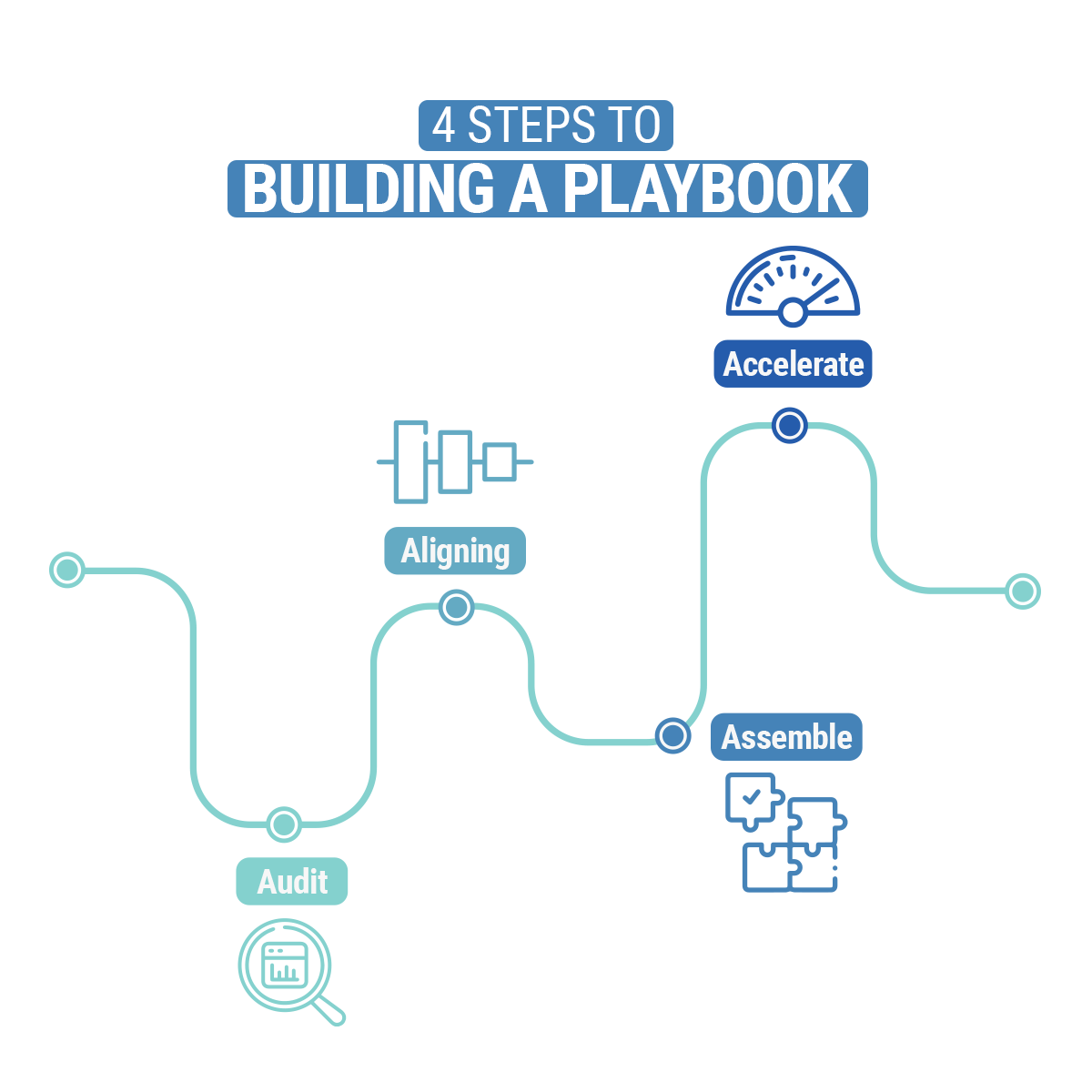
The 4 Key Steps to Building Your Sales Playbook
1. Audit
The first step in building your playbook should be an audit of your existing processes and identifying what’s been working for you. There may be a range of different areas that you’ll want to examine, such as sequences, templates, scripts, etc.
2. Aligning
The next thing you need to do is align all the different elements of your playbook to an outline, and organize them into folders. These might include your communication folder, your demo discovery folder, your outreach folder, and your marketing resources folder.
As part of your aligning process, you’ll place everything you’ve identified in the audit step into one of your folders. This will give structure and coherence to your playbook.
3. Assemble
Once you’ve aligned everything into an organized file system, you take everything you’ve gathered and write it all out into your different chapters and headings.
4. Accelerate
This is the final and most complicated step. Once you finish your sales playbook, you’re then looking at ways to improve some of the processes you have, and potentially fill gaps. This takes us right back to step one — the audit.
You’re going to go through these four steps continually. The market, your customers, and the team will all be constantly changing, so you might want to revisit this on a daily, weekly, monthly, or yearly basis, as you see fit.
The playbook should be a living document that is perpetually being crafted and enhanced based on your team, based on your product, and based on what the market is telling you.
Build a Repeatable Scalable Sales Culture from Scratch
In this ebook, you will learn:
- Building Your Sales Playbook in Four Steps
- How to Build Your Sales Process Growth
- How To Scale Sales By Building Empathy With Prospects
- How To Hire, Onboard and Coach SDRs To Success
- Every chapter has printable worksheets that you can use to audit your sales process along the way.
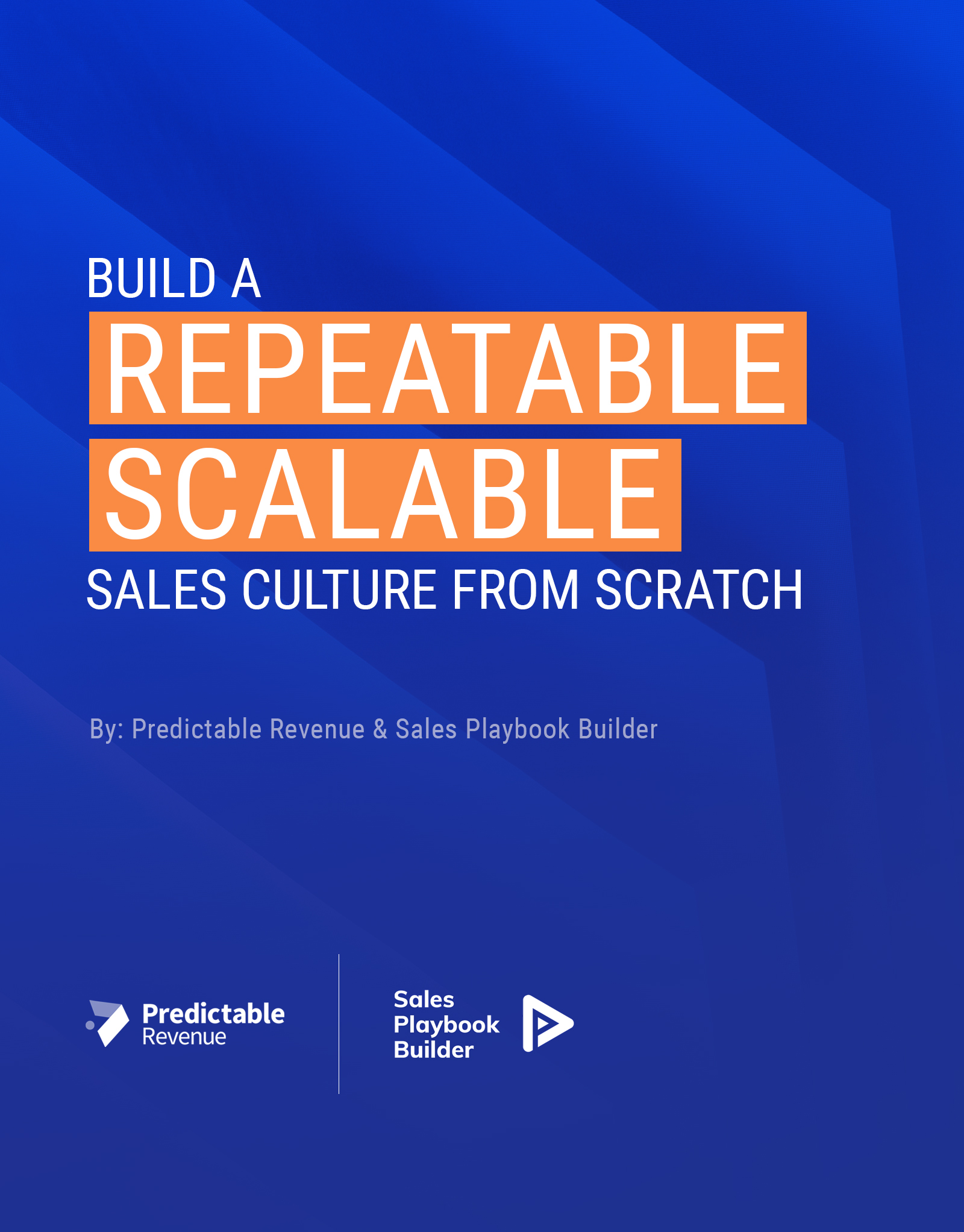
Mapping, Scoring, and Coaching Key Competencies in The SDR and AE Roles
A guided sales process contains the tasks that a rep needs to complete with an opportunity to progress it from initial engagement to contracted business. It is the common language that every person in the sales organization speaks and understands.
With sales enablement, we start to examine the competencies that sit within each task of the sales process. Once we’ve identified each one, we can start to score them to track metrics within our department.
Mapping
How do you determine the competencies that exist within each task? First you have to understand what a competency is. It’s the hard skill a rep needs to have to achieve the task.
The intention behind clearly mapping competencies is to be able to pinpoint where exactly a rep needs work so you, as a coach, can focus on just improving a few things at a time. You must seek to uncover unconscious incompetencies within your reps. Then, show them what “good” looks like, and you’ve turned their unconscious incompetence into conscious incompetence.
Scoring
Once you have identified each competency, you score them 1-3 (1 being awful, and 3 being great).
The goal with scoring is to take conscious incompetence and work on it until it becomes a conscious competence and, eventually, an unconscious competence. Look at your most successful reps to be the benchmarks for a score of 3, and then work on getting other reps to a 3 as quickly as possible.
Scoring is so important because it is prescribed learning based on a metric. A competency is something qualitative, but scoring it makes it quantifiable.
Coaching
It’s industry knowledge that SDRs need to be self-motivated and self-directed, but the traditional coaching methodologies don’t empower them to do that. You can’t just be reactive, look back at something an SDR has done and say “this is how you should have done it.”
Similarly, you can’t just reward the output of an SDR, you have to acknowledge all the right steps that were taken to get there. You want to create self-awareness in performance and behavior, and that starts with coaching.
With the right type of coaching, you encourage reps to coach themselves. They become self-analytical and start catching and improving mistakes before they make them, and can critique their own work.
Prospect Smarter Using LinkedIn
Prospecting on LinkedIn has become a common part of the outbound sales process, but salespeople are still falling into the same traps of the connect and pitch, sleazy messaging, and pushy follow-ups.
LinkedIn is a sales channel that is ripe with opportunities, for those who know how to use it effectively. In particular, it’s a medium that is highly conducive to building trust in prospects.
Optimizing Your Profile
One of the first things your sales reps should do before reaching out to a prospect is to optimize their LinkedIn profile. A couple of really quick adjustments can be made that will have a big impact.
Ensuring that you have consistency across your brand is a valuable starting point. Your marketing department is no doubt working hard to produce a lot of great content, so utilize this effectively. For instance, make sure sales reps place an inviting branded banner at the top of their profile.
Their headline is another key area to focus on. This is something that should set the tone for the rest of the profile. Rather than writing their job role, they should briefly describe how they help certain personas to achieve certain tasks.
The summary within their profile and the job description can follow that as well. Telling a story about how they help customers goes much further as social proof than saying you constantly hit your quotas.
Reaching Out To Prospects
Once they have optimized their profile to make it more engaging and start building trust, they’re ready to approach prospects. But what’s the best approach? Should they go for the hard sell, and directly pitch as soon as they connect with someone?
There’s a balance to be struck between engaging socially with prospects and pitching to them. As with many sales activities, the key is to carefully test what works through trial and error.
It’s useful to keep the sales funnel model in mind and to consider all of the individual steps therein. You want to make each of these steps as easy as possible for your prospect to say yes. The first barrier that the reps will face is getting them to say yes to accepting their invitation on LinkedIn. So, sales-y invitation messages are not a good idea.
The Timing of Your Messages
It is also necessary to carefully consider the timing of sequences. While you don’t want reps to come across as needlessly aggressive, they do need to strike while the iron is hot. A good proportion of those people who accept their invite who are going to respond will respond within half an hour to an hour.
Accordingly, it’s important that they get the follow-up message sent as soon as possible after the connection is made. This will help narrow down their results to those most likely to end in a sale.
Once they see that connection, the earlier they can get this follow-up message sent, the better. If they can do it within 15 – 30 minutes, they have an opportunity to filter out people who they don’t want to be speaking with. If they don’t get the second message out quickly, then the first message alone might result in them receiving many false positives.
Converting The Meeting
If the reps get a strong positive, then an important next step is to source the prospect’s business email. A reliable way of doing this is asking: “do you mind providing a business email so that we can solidify a time in our calendars?”. They’ll then feel more motivated to respond to them in an appropriate time.
In order to get the meeting, the reps have to start with a very clear idea of who they are going after. The great thing about LinkedIn is that you can look at size, role, and function. So, if you have your ICP nailed, LinkedIn can be a huge multiplier.
The Art of LinkedIn Prospecting
As the world’s largest professional network, there couldn’t be a better platform to learn about and engage with your prospects than LinkedIn.
In this ebook, you’ll find 7 actionable tactics to succeed:
- Profile optimization
- List building
- Engage with prospects
- Messaging
- Content that attracts buyers
- Setting the meeting
- Connection request
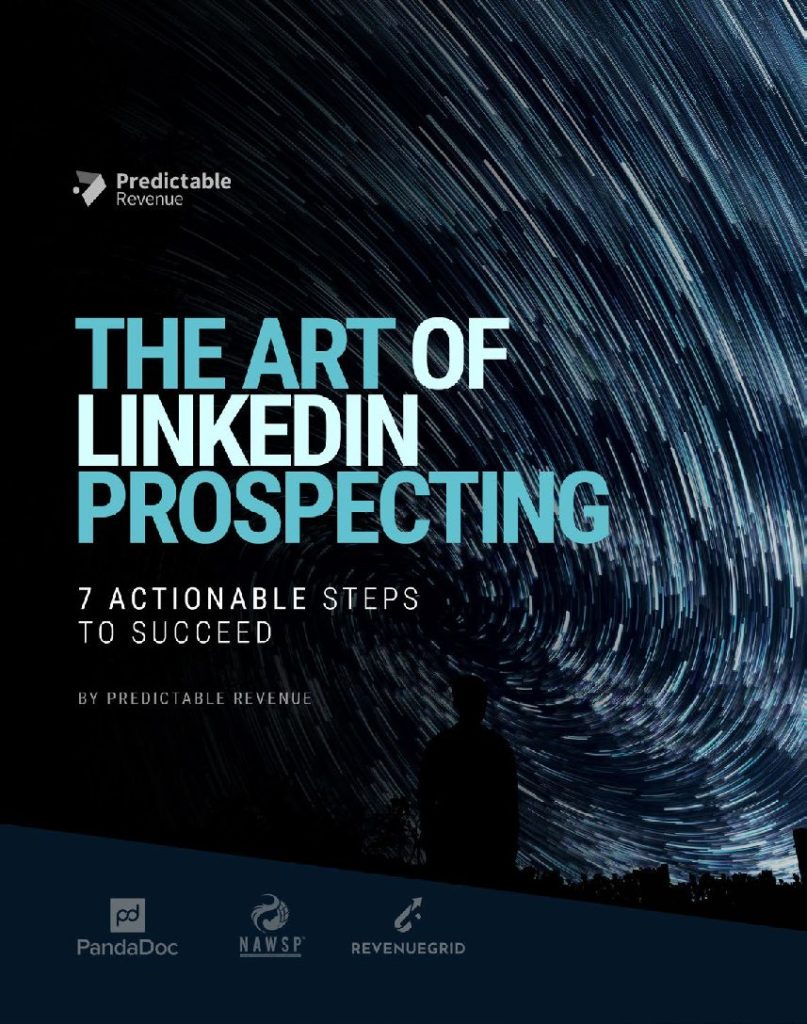
Cold Calling 101
Building Rapport
Rapport building is vital to the sales process to connect with prospects and be able to do business with them. But on the average cold call, SDRs may have fewer than 30 seconds to give prospects a compelling reason to continue engaging with them.
Here are five tips that’ll help you coach your SDRs to build stronger rapport on your their sales calls:
#1: Preparation
It’s easier to start a conversation about shared interests and experiences when you know what you have in common with the other person.
Ask your reps to check out the prospects’ profiles on LinkedIn, Facebook, Twitter, or Instagram.
Who do they follow? What kinds of content are they sharing? Do they have any mutual connections, such as past employers or former coworkers? What are they interested in? Do they have any hobbies?
Advice your reps to be careful in observing the fine line between building rapport and coming across as creepy.
You can do a role play with them so they get the hang of it. Ask them to check out your social media profiles and come up with ways to build rapport with you based on that.
#2: Relevant Questions
Teach your reps the importance of asking relevant questions. A few sales discovery questions that will help sales reps hone in on the prospects’ needs and pain points include:
- What are your goals and timeline?
- What problem are you trying to solve?
- What are your main obstacles in carrying out the plan?
Be careful that sales reps don’t overload prospects with questions so that they don’t come off as aggressive.
#3: Being Human
People are looking to connect, so be wary of your sales reps speaking like robots or using too much jargon.
They should be letting their personality come through during the cold calls, even if they’re using scripts.
Here are a few pointers you can give your reps if their delivery has become too robotic or wooden:
- Modulate the pitch of your voice as you’re speaking. If they’re using sales scripts, it’s easy to fall into a monotone delivery. Real people vary their tone constantly in conversation.
- Don’t be afraid of “ahhs” and “umms.” Filler words like these aren’t great if you’re giving a speech, but they’re a natural part of normal conversation. If they remove these words from their cold call pitch entirely, they could risk coming across as too polished and unrelatable.
- Use confirmations to reassure your prospect that you’re listening. Expressions like, “I see” or “mmm-hmm,” make it sound like they’re actively engaged in the conversation – not just plotting out what they’ll say next.
#4: Listen with Empathy
There’s active listening, and then there’s listening with empathy. Listening with empathy actually goes above and beyond active listening, because you’re working to process information on two levels: what’s being said and why.
To start using empathy more effectively, make sure your sales reps are letting the prospect lead the conversation. Nothing kills rapport more quickly than getting pushy towards a close. As they listen to their prospect, they could try asking themselves:
- What is the motivation behind what they’re saying?
- What do you notice about how the person is speaking?
- How does their voice sound? What kind of emotions are you hearing?
It can be tough to try to tune in on this level without missing the specific words the prospect is saying. But by being present and being fully engaged, they’ll build stronger rapport, as well as leave the call with a better understanding of the prospect’s needs and current circumstances.
Listen to your rep’s last 10 cold calls to learn where they stand and what needs to be improved. Then use these tips to help them connect with prospects more efficiently and genuinely.
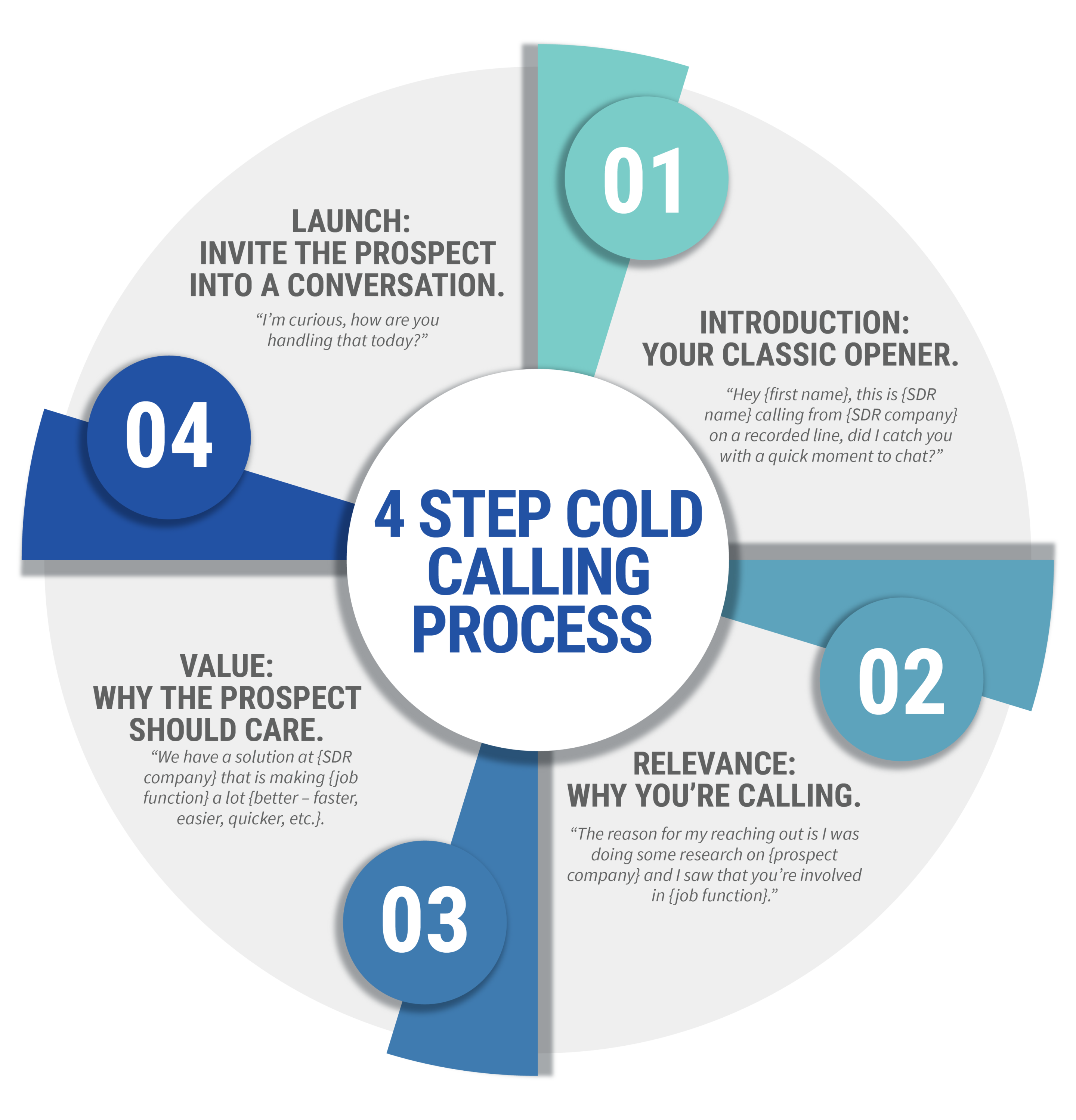
Destroying Objections
Objections are an inevitability if you’re making cold calls. But with the right mindset, reframe strategy, and pattern interrupts, you can crush 99% of those objections, and the remaining 1% of true, infallible objections won’t be able to dampen your spirits.
- Pattern interrupt – If the prospect expects your response to be X, do Y. This is done by breaking rapport for a moment, interrupting the pattern of the conversation, and saying something unexpected.
- Neutrality is better than enthusiasm – Staying in rapport at the wrong time can kill a sale. If when expressing a certain objection a prospect becomes angry, over-empathizing, and feeling that emotion too isn’t going to get you anywhere. But breaking rapport doesn’t mean showing the opposite emotion from your prospect. You need to understand where the prospect is coming from without going there yourself. Many salespeople also make the mistake of being artificially positive or enthusiastic in the face of objections. When responding, neutrality is key. You can keep yourself out of fight or flight by breathing from the belly and, as strange as it sounds, keeping 20% of your consciousness on the feeling of your feet touching the floor.
- Don’t make it about you – There is nothing wrong with you if a prospect objects. It’s not about you, personally, it’s not your fault, and dwelling on it will make it impossible to bounce back in the conversation.
- Don’t make it about them – If someone objects, especially in an emotionally charged way, don’t make assumptions about them. People hardly ever say what they really mean, so most objections need interpreting. Writing the prospect off in your head as any number of offensive monikers will make it difficult to remain neutral.
- The first objection is not written in stone – The first objection is hardly ever a true objection, but rather a reflection of what the prospect thinks, feels, or believes in the moment. Consequently, it is almost always subject to change.
- The reframe – You’re not selling a product or service. You’re selling decisions or good feelings about decisions. Think of yourself as a decision service technician. When you handle an objection, you don’t always have to give your prospect a factual answer. What is even more effective is reframing their objection by giving a counterexample and then asking a question to get to the root cause.
Converting a Cold Call Into a Meeting
Once you’ve successfully completed the launch and the prospect has taken the bait on your invitation into the conversation, you need to dig in. Ask them questions like “How are you involved in improving {job function} in your organization?” If they say they aren’t, ask “Help me understand your role, what are you involved in?” Then ask follow-up questions like “How are you handling this today? How else might you approach this? Are you able to achieve the goals that you want to achieve?”
All of these questions are designed to give you a clear understanding of what is going on in that prospect’s company today and to see if there is a gap that you could fill and make a strong business case for. Only after you have uncovered said gap can you ask for the meeting.
“Based on what you’re doing today, specifically {process 1, 2, and 3}, and comparing that to our customers who are able to do {job function} {better}, it seems like there might be an opportunity to optimize some things – and that’s what I really wanted to connect about. Would it be worth having a conversation?”
It’s more important than ever to have a strong cold calling strategy that will help you convert cold calls into meetings. It starts with the mindset of never taking “no,” only “f*ck no” for an answer.
Cold Calling Script Templates For Your Sales Reps
While we always recommend that every sales tip, trick, or tactic be taken with a grain of salt and A/B tested against other methods, these cold calling scripts have stamps of approval from some of the most successful and reputable B2B sales leaders and practitioners in the sales development industry.

Cold Sales Email Writing 101
Cold email writing is one of our most popular sales coaching topics, in large part because of the mystery that surrounds successful campaigns. It can be tricky figuring out which subject line, CTA, or message performs best–especially when tweaking a word or two can drastically change your response rates.
The 4 Traits That Ensure a Great Email
There is no magic formula, every industry and every company will face their own challenges, but the best outbound sales emails share a few common characteristics: they’re clear, concise, relevant, and personal.
1. Clear
Outbound sales campaigns should use more conversational language than marketing; avoid jargon, and ask yourself whether or not your email reads like something you would say in real life.
Sales reps should avoid stealing phrases from your company’s website and go for a more casual tone (try starting with “hey” instead of “hello”). Prospects receive dozens or even hundreds of cold emails a day, so we don’t want to make them think too hard. A better way for reps to approach this is to introduce themselves and ask for what they want directly, with clear, specific language.
2. Concise
Generally speaking, the fewer words in your outbound sales email, the better. Practice with your sales reps to keep it simple and to the point.
Subject lines should be no longer than four words and relevant to the rest of the message. Ideally, the email body copy should contain the same words as the subject line, so the prospect doesn’t feel like you’ve pulled a bait and switch.
The ideal length for outbound sales emails is less than 100 words, but if you can cut it down to less than 50, even better! This is true across all industries–if your product takes longer than 100 words to explain, it means you haven’t found the right messaging.
3. Relevant
Relevance builds trust in outbound sales emails by making prospects feel understood. It’s important to position your company’s solution as relevant to something the prospect already wants, rather than try to have reps convince them to want something new.
Once you know what your prospect wants, research how they talk about it. What language do they use to describe their goals? Use this information to position your solution in the context of what they’re trying to do.
The more specific you can be here, the better. Using relevant language will make your prospect feel like you truly understand their business problem.
One other thing to keep in mind is that your prospect may already have a solution in place. If that’s the case, then acknowledge that and gently point out some of the problems they may be experiencing with that solution (without attacking their choice to go with a competitor).
4. Personal
Before having reps write their next outbound sales emails, have them answer this question from the prospect’s point of view: “Why me, why now?”. If the prospect opens an email that could have easily been addressed to hundreds of other people, they’re unlikely to respond.
The prospect wants to feel like you put some effort into understanding them. Again, research is key here. Learn how your prospects talk about their problem, either through interviewing them, asking colleagues who share the same title, or browsing relevant job postings.
Use “you” focused language to empower them as the hero of this story. Empower them to solve their own problems, rather than portraying yourself as the rescuer. One way to do this is to appeal to their emotions by referencing a part of their job that they hate. If your solution can remove that dreaded task, you’ll have the prospect’s attention.
Outbound Sales Email Checklist
Use this checklist quickly assess your cold emails and identify any areas for improvement. And keep it handy the next time you need to write an outbound sales message!

Common Email Writing Mistakes That Kill Your Sales
When done properly, outbound sales emails can turn leads into customers and boost your sales rates significantly. But sales reps tend to make some basic email writing mistakes that are killing their sales. Take a look at these mistakes so you can help your reps improve their writing game.
Cold Subject Line
Having the prospect open your email is the hardest and most important step in the process, and your subject line is the key to making it happen. If you have an unexciting subject line, you’re risking not having your emails opened.
Write a subject line that is:
- Inviting- providing a strong reason for people to open the email
- Explanatory– giving a glimpse of the important information it contains
- Specific– define what’s in it for the potential customers
- Promising– be honest about the content of the email
- Urging– add pressure
The potential customer needs to know the email is relevant to their needs and their business needs, which will make them want to open it. Be creative and add spice to every subject line you’re writing.
No Clear Goal
Sales emails need to have a clear purpose, so make sure you define the main goal before your rep starts writing.
You can have goals such as:
- Introducing a new product/service
- Rewarding loyal customers
- Promoting an event
- Raising brand awareness
Whatever the goal is, decide on it at the beginning of the writing process and have the rep focus on making that one goal clear and strong.
Too Much Text
The next common mistake you have to avoid is having too much text in your email. Huge chunks of text are extremely repelling to people and might result in email abandonment.
Instead, you need to make your email a combination of:
- Short paragraphs of text
- Headings and subheadings in larger fonts
- Bullet points and lists
- Links to click on
Organize your email body to make it less monotonous and more exciting. Keep it brief and include nothing but important information.
No CTA
CTA (call-to-action) should be a regular part of your perfected email copy, especially if you aim to have the potential customers perform a desired action. CTAs are a powerful tool that influences people to make the decisions you want them to make.
Your email needs to have a CTA that is:
- Visible and dominating the email design
- Intriguing
- Brief and clear
- Clickable and takes the customer to a specific landing page
CTAs help customers perform the action you’ve intended by asking them for no more than a single click.
Not Proofreading
A single typo can ruin the entire effort to write a witty, effective, and winning email copy. Proofreading is not supposed to be optional. It’s mandatory if you want to show you’re professional and trustworthy. When proofreading your email copy, you should use a combination of tools and techniques:
- Spell and grammar checker
- Readability checker
- Ask a friend or a colleague to check it for you
Reps should polish their copy to perfection before they send it, or else they’ll risk damaging their own reputation and coming across as sloppy and unprofessional.
Cold emailing is seemingly simple, but putting together an effective message—from subject line to signature—takes a fair bit of thought. You can only make a first impression once and it’s difficult to stand out in an email, so review these tips the next time you’re coaching your sales team.
You don’t have to do this alone! We can work with your leadership team to help implement sales processes from the top down, as well as your team of sales development representatives to provide them with tactical sales coaching and training designed to help them achieve their quota month after month. Take a look at our Sales Development and Coaching Services to find the engagement that suits your company and pain points the best.
40+ Sales Development Email Templates That People Actually Respond To
You don’t have to figure it out alone, whether you’re starting off as a sales representative, looking to improve your game or providing your team with expert advice, we have your back!
In this eBook, you’ll find:
- Templates for cold email outreach, including: first touch, follow-ups, no show, re-engagement, break-ups, and more.
- Objection handling templates.
- Templates & tips for LinkedIn outreach, including: connection request messages, conversation openers, setting the meeting, and more.
